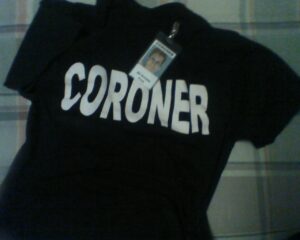Disclaimer: I am not a lawyer. This blog should not be viewed as legal advice. It is simply my experiences, opinions, and information I looked up on the internet.
This is the time of year when kids are heading back to school with new clothes and new notebooks. Unfortunately for some kids, they are going back with an all too familiar feeling of dread – the dread that accompanies going to a school where they are victimized on a daily basis with teasing, being hit and pushed, and being humiliated in front of their classmates and teachers.
I had the pleasure of meeting Caleb Laieski last week, the teen who dropped out of school on his 16th birthday because of the bullying he was enduring. He has since earned his GED and is now a lobbyist in Washington D.C. against bullying and discrimination in schools. We agreed that if a student is being physically assaulted in school and the administration is turning a blind eye to their plight, that the student should report it to the police.

When I think of bullying in schools, I think about kids being shoved into lockers, being tripped in the hallway, and getting swirlies in the bathroom. In high school, these bullies face detention if they’re caught; but in the real world we call this “assault.†In the real world, people go to jail for this.
We want schools to be safe and we entrust teachers and administrators with protecting students. Unfortunately, that doesn’t always happen. Sometimes they make excuses for problem students. Sometimes they ignore the problem, despite receiving reports of bullying and pleas from victimized students and their families. At that point, students can’t rely on the schools for protection, and they should report all incidents involving physical violence to the police.
Why should students go to the police instead of suing the school for not fulfilling their obligation to protect its students? The obvious reason is that it won’t stop the bully in his/her tracks; being arrested will. Suing the school takes a lot of time, energy, and money. Additionally, the victims of bullying that I’ve met weren’t interested in making money; they just wanted the harassment to stop. Reporting the violence to police is a faster, more efficient solution.
I recently spoke with a parent who reported a bully to the police. Multiple families had complained about the bully, and the school always made excuses for him. One parent decided that he’d had enough and reported the bully to the police when his child was physically assaulted after sticking up for another student who was being victimized. The benefit to the bully, besides getting a clear message that his behavior was unacceptable, was that he was required to attend the counseling and anger management classes that he needed.
When I was in high school, it seemed like students’ options for recourse ended at the principal’s office. It makes me wonder if today’s victimized students know that they have options besides dropping out if their school won’t protect them. The school won’t tell them – a school that won’t protect its students probably doesn’t want them to seek outside help either. It’s up to the advocates to provide the necessary information and support to these students.
Related articles
- Bullying influences students’ grades, finds study (news.bioscholar.com)
- Bullying: The Problems and Some Interventions (education.com)
- Bullying climate linked to school scores? (knoxnews.com)




